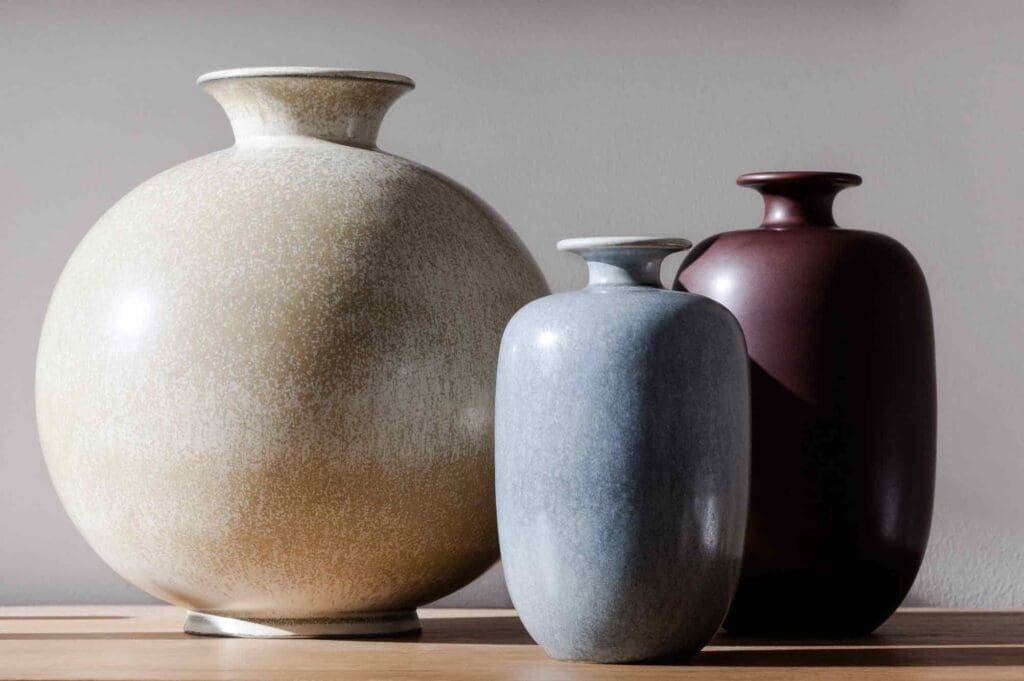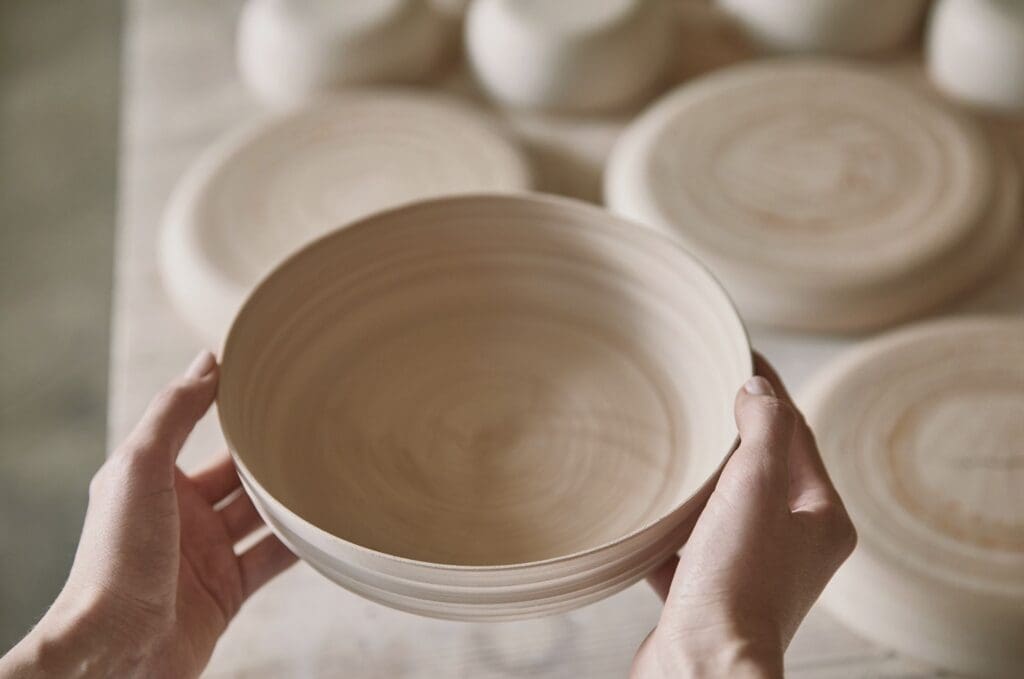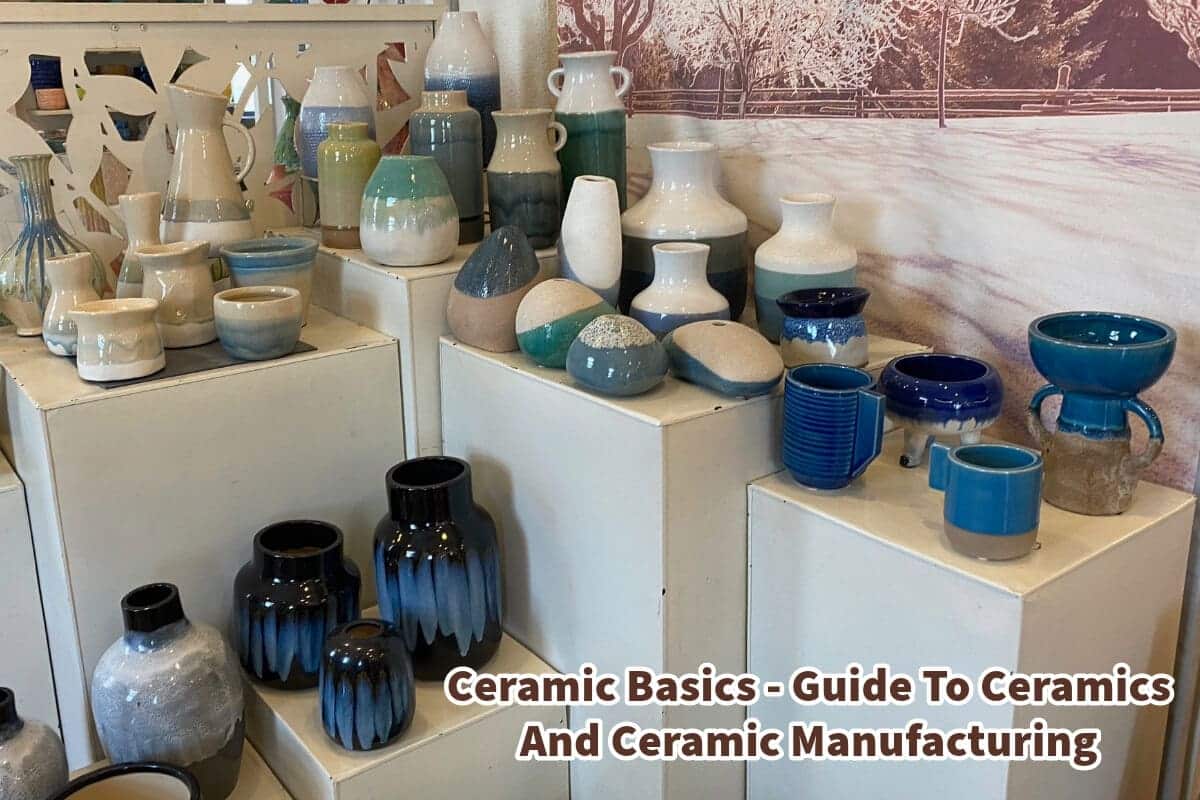The term “ceramics” frequently pops up in discussions about home décor, and at Mondoro, we specialize in creating a diverse array of ceramic pieces.
But what exactly is encompassed by the word “ceramics”? How can these materials be molded into various forms? Read on as we work to unravel ceramic’s fascinating medium’s intricacies.
Table of Contents
- Ceramic Basics: A Comprehensive Guide To The World Of Ceramics
- Traditional Types Of Ceramic Pottery
- Ceramics Throughout History
- 25 Frequently Asked Questions About Ceramics
- Related Content
Ceramic Basics: A Comprehensive Guide To The World Of Ceramics
What is ceramics, anyway? The term is thrown around in art classes, shopping aisles, and advanced technology. Yet, for many, the world of ceramics remains a mystery.
From shaping clays to firing in kilns, ceramics offers an intriguing blend of craft, science, and history. In this post, we’ll delve into the fascinating realm of ceramics, from its basic definition to its varied techniques, traditional types, and historical evolution.
What Are Ceramics?
Ceramics refers to objects made from naturally occurring raw materials such as clay, earthen minerals, and water. These materials are shaped using hand building, wheel-throwing, or mold casting.

After the object attains its form, it is fired in a kiln at high temperatures. This firing process hardens the object and makes it heat-resistant. Ceramics serve multiple purposes, from functional dinnerware and building materials to artistic sculptures.
Techniques In Ceramics
Depending on the project, different techniques can be employed in ceramics. Here are some popular methods:
Handbuilding
This involves building ceramic objects by hand using various approaches like:
- Slab Technique: Using flat pieces of clay to construct objects.
- Coiling: Rolling out long strings of clay and layering them to create shapes.
- Pinching: Manipulating the clay between the thumb and fingers to form shapes.
Wheel-Throwing
This technique uses a potter’s wheel to create symmetrical objects, primarily pottery. The wheel allows for consistent and precise shaping.
Slip Casting
This method helps create multiple identical objects. Liquid clay, known as “slip,” is poured into a mold, solidifying it into the desired shape.
At Mondoro, we do a lot of slip casting for our ceramics. This allows us to do a lot of unique forms and shapes.
Traditional Types Of Ceramic Pottery
Ceramics can be categorized into various types based on the clay used and the firing process. Common types include earthenware, stoneware, porcelain, and bone china.
Earthenware
Earthenware has not undergone vitrification, where clay converts into a glass-like substance. This leaves the material porous and coarser. Examples of earthenware include terracotta planters and certain types of bricks.
Stoneware
This ceramic type is fired at higher temperatures and often has a glassy finish due to enamel coating, making it non-porous. Its color generally leans towards earth tones.
Porcelain
Made primarily from kaolin clay, porcelain ceramics are fired at extremely high temperatures, between 2,200 and 2,600 degrees Fahrenheit. This makes porcelain exceptionally strong and heat-resistant.
Bone China
This variety is known for its high strength, chip resistance, and transparency. It consists of bone ash, feldspathic material, and kaolin clay.
Ceramics Throughout History
Ceramics have been a cornerstone of global trade and cultural exchange for centuries. Take, for instance, the ceramics village located just outside Hanoi, Vietnam, which has been crafting ceramic goods for several hundred years.

You’d be hard-pressed to find a civilization that doesn’t have some tradition of ceramic production, underlining its universal appeal and enduring significance.
The Dawn Of Ceramics
The oldest known ceramics, dating back to 25,000 BC, were discovered in Czechoslovakia. These were not functional wares but figurines made from animal fat, bone, bone ash, and clay.
Early Functional Wares
The first functional ceramic vessels appeared around 9,000 BC, coinciding with the rise of small farming communities. These were primarily used for storing food and water.
Decorative Techniques
Initially, ceramics were simplistic and unglazed. However, by the 6th and 5th centuries BC, Greek Attic vases began to display oxidizing and reducing atmospheres during firing to create intricate surface patterns.
The Invention Of The Wheel
Around 3,500 BC, the invention of the wheel allowed potters to explore new possibilities in ceramics, notably the production of objects with radial symmetry.
Porcelain And Global Trade
Chinese potters introduced high-temperature kilns and porcelain around 600 CE. The Silk Road eventually facilitated the spread of these innovations to Europe and the Islamic world.
Modern Day Ceramics
In the post-WWII era, ceramics found applications beyond art and utility. They became integral to technology, medicine, transportation, and other sectors.
From the clay under our feet to the coffee mugs in our hands, ceramics are an indispensable part of our daily life and historical heritage. Whether you’re a budding artist, a seasoned craftsman, or someone fascinated by this millennia-old craft, understanding ceramics can open up a world of possibilities for artistic expression, practical utility, and technological innovation.
So the next time you sip coffee from a ceramic mug or admire a porcelain vase, you’ll appreciate its beauty and the rich tapestry of history and craftsmanship it represents.
25 Frequently Asked Questions About Ceramics
1. What is ceramics?
Ceramics are a category of materials made from clay and other inorganic compounds that are heated to high temperatures to create various objects and structures.
2. How are ceramics different from pottery?
Pottery is a subset of ceramics and specifically refers to objects made from clay that are often used for functional purposes, such as dishes and pottery vessels.
3. What are the primary components of ceramics?
Ceramics are primarily composed of clay, which is a naturally occurring material rich in minerals like kaolin and feldspar.
4. How is ceramic art different from ceramic engineering?
Ceramic art focuses on creating decorative and artistic pieces, while ceramic engineering involves designing materials for practical applications, such as in electronics or aerospace.
5. What is the history of ceramics?
Ceramics have a long history dating back thousands of years, with ancient cultures using clay to create pottery, tiles, and sculptures.
6. What are some common types of ceramics?
Common types include earthenware, stoneware, porcelain, and refractory ceramics used in high-temperature applications.
7. How is clay prepared for ceramics?
Clay is typically mined, purified, and then mixed with water to form a workable clay body.
8. What is the process of shaping ceramics?
Ceramics can be shaped using techniques like hand-building, wheel-throwing, or molding.
9. What is the role of firing in ceramics?
Firing involves heating ceramics in a kiln to harden and strengthen them, often at temperatures exceeding 1000 degrees Celsius.
10. What are glazes in ceramics?
Glazes are liquid coatings applied to ceramics before firing to provide color, texture, and a protective finish.
11. Can ceramics be painted or decorated?
Yes, ceramics can be painted, glazed, carved, or decorated in various ways to enhance their appearance.
12. Are ceramics waterproof?
Once properly fired and glazed, ceramics are generally waterproof and suitable for holding liquids.
13. How do ceramics compare to other materials in terms of durability?
Ceramics are known for their durability and resistance to wear, making them suitable for both decorative and functional purposes.
14. What are some famous examples of ceramic art?
Examples include Chinese porcelain, Greek pottery, and contemporary ceramic sculptures by artists like Pablo Picasso.
15. Can ceramics be used for architectural purposes?
Yes, ceramics are commonly used for tiles, facades, and decorative elements in architecture.
16. Are ceramics environmentally friendly?
Ceramics are often considered environmentally friendly because they are made from natural materials and can be recycled.
17. What is the difference between earthenware and porcelain?
Porcelain is fired at higher temperatures and is more translucent and less porous than earthenware.
18. Are ceramics microwave and dishwasher safe?
Ceramic dishes and cookware are generally safe for microwave and dishwasher use, but always check manufacturer guidelines.
19. What is the importance of ceramics in the aerospace industry?
Ceramics are used in aerospace for their high-temperature resistance and lightweight properties, particularly in engine components.
20. Can ceramics conduct electricity?
Some ceramics, like piezoelectric ceramics, can conduct electricity and are used in electronic devices.
21. What is the significance of ceramics in the medical field?
Ceramics are used in medical implants and prosthetics due to their biocompatibility and resistance to bodily fluids.
22. How do I care for ceramic pieces at home?
Ceramics should be handled with care, avoid rapid temperature changes, and cleaned gently to preserve their appearance.
23. Can ceramics be repaired if they break or chip?
Ceramic repairs are possible, but the success of restoration depends on the extent of damage and the skill of the restorer.
24. What is the future of ceramics in technology and industry?
Ceramics continue to find new applications in technology, including electronics, energy storage, and advanced manufacturing.
25. Where can I find unique ceramic art pieces and creations?
You can find unique ceramic art pieces at galleries, craft fairs, and from individual ceramic artists and studios like Mondoro specializing in ceramic creations.
We would love to talk to you if you want to see how we can help you with any of your ceramic production.
Find out more about how Mondoro can help you create, develop, and manufacture excellent home decor and furniture products – don’t hesitate to contact me, Anita. Check out my email by clicking here or become a part of our community and join our newsletter by clicking here.
Mondoro gives out a FREE Lookbook to anyone interested. You can receive a copy of our latest Lookbook by clicking here.
Listen to our Podcast called Global Trade Gal. You can find it on all major podcast platforms. Try out listening to one of our podcasts by clicking here.
Subscribe to our Mondoro Company Limited YouTube Channel with great videos and information by clicking here.
Related Content
Is Real Wood Furniture Worth The Extra Cost?
Real wood furniture costs can vary due to the types of solid wood being used and the grade of the wood. Not all real wood furniture is worth the extra cost, especially if the wood they use is substandard and poorly constructed.
You can discover more by reading Is Real Wood Furniture Worth The Extra Cost? by clicking here.
What Color Is Expresso Furniture?
The Expresso color in furniture is a black-brown color with some red and gold highlights showing through the color. The expresso color furniture can look more like indirect brown light and more like black in a dimly lit room.
You can discover more by reading What Color Is Expresso Furniture? by clicking here.
Is Horsehair Used In Upholstery?
Horsehair is found today in mainly antique furniture that has been restored. You can still purchase horsehair or horse and hog hair to upholstery your antique furniture piece. Today most sofa and cushion manufacturers will use polyurethane foam, down, and feathers, not horsehair.
You can discover more by reading our blog, Is Horsehair Used In Upholstery? by clicking here.

